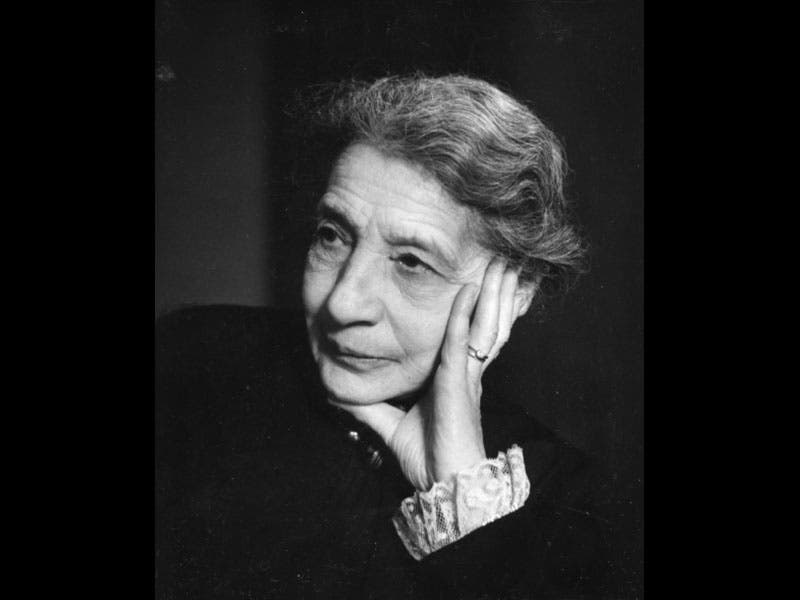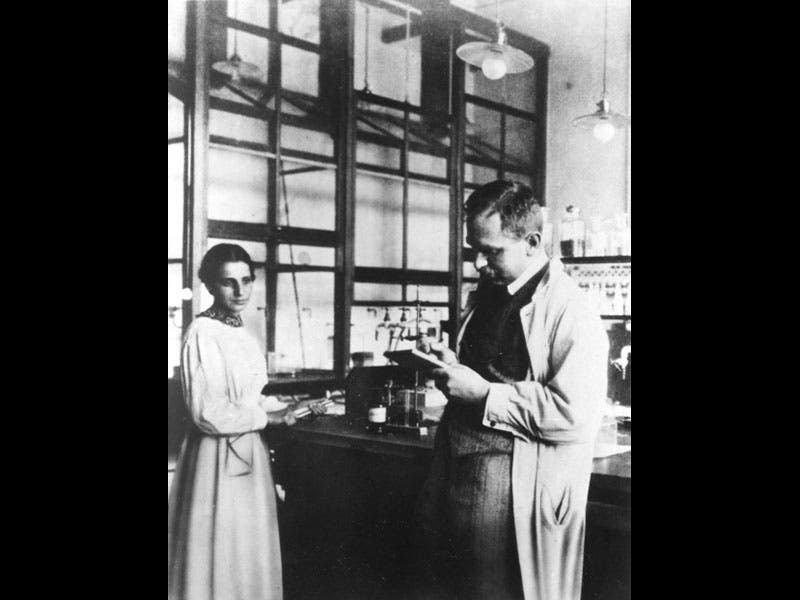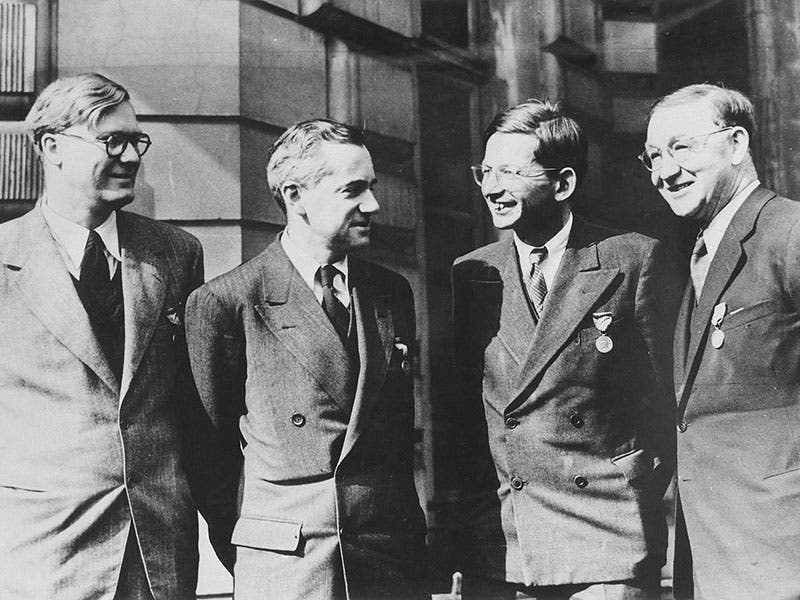Scientist of the Day - Lise Meitner
Lise Meitner, an Austrian physicist, was born Nov. 7, 1878. Meitner worked for many years with Otto Hahn, a chemist in Berlin, doing experiments investigating the nature of radioactivity, but when Hitler annexed Austria in 1938, Meitner suddenly found herself a German Jew, and she was spirited out of Germany by friends. She ended up in Sweden, where, in late 1938, she received a letter from Hahn, detailing an experiment he had just done. He and Fritz Strassmann were bombarding uranium with neutrons. They thought that they were producing trans-uranic elements (elements heavier than uranium), but Hahn discovered that one of the byproducts of the bombardment was barium, a much lighter element. Hahn was mystified, and he wrote to Meitner because she was a physicist and might be able to shed light on what had occurred.
It happened that Meitner’s nephew, Otto Frisch, also a physicist, was visiting Meitner in Sweden for the holidays, and as the two strolled in the snow in those days after Christmas, they came to understand that, in Hahn's bombardment experiment, uranium atoms must have split into two lighter by-products, one of which was barium. Hahn had split the atom, only he didn't know it. Meitner and Frisch figured out how and why a nucleus could divide, and they also understood that such a reaction would produce a prodigious amount of energy, and they immediately sent off a paper to Nature, a paper that was published on Feb. 11, 1939, with the title "Disintegration of uranium by neutrons: a new type of nuclear reaction." They called the new reaction: "fission." The Pandora's Box of atomic energy had suddenly been opened.
In 1945, Hahn received the Nobel Prize in Chemistry (for 1944) for his discovery of fission. Meitner and Frisch were not so honored, or even mentioned in the citation. Now that the records of the prize committee’s deliberations have been unsealed, it appears that the committee was not prepared to consider the possibility that a pair of physicists might have made an important contribution to a discovery that was essentially chemical. Meitner was very gracious about the omission in her later years, but there are many people who feel that a share of that Nobel Prize should have been hers.
The first phograph above is a formal portrait of Meitner taken after the war. The second photograph shows Meitner in the lab with Otto Hahn in 1913. The third image shows Meitner at a congress in 1920 that she helped organize; she stands between Niels Bohr and Hans Geiger. The last image shows her nephew, Otto Frisch, second from the left.
Dr. William B. Ashworth, Jr., Consultant for the History of Science, Linda Hall Library and Associate Professor, Department of History, University of Missouri-Kansas City. Comments or corrections are welcome; please direct to ashworthw@umkc.edu.










